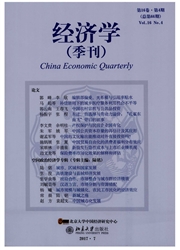

 中文摘要:
中文摘要:
本文利用1998年到2004年中国制造业企业数据,从企业代际和年龄的角度研究了中国制造业企业的生产率变动,得到三个基本发现:(1)新进入企业总是能够将当时先进的技术知识和组织制度“物化”在企业的物质和组织资本中,存续企业也能通过“干中学”而提升其生产效率;而且只有在改革开始以后成立的企业才显现出显著的日益上升的代际优势;(2)中国制造业企业的代际和年龄优势并没有相应反映在外资企业上,外资企业的代际优势几乎没有,正年龄效应在第6年后也几乎消失;(3)尽管国有企业平均来看较其他所有制企业的生产率低,但在1988年之后新成立的国有企业日益增加的代际优势,表现出了明显的“追赶”效应。
 英文摘要:
英文摘要:
Using a large dataset of China's manufacturing firms over the period 1998-- 2004, this paper analyzes the sources of productivity changes from the viewpoint of firm age and cohorts. We have three major findings.. (1) New entrants enjoy cohort advantage over older incumbents by embodying state-of-the-art technology and institutions in their physical and organizational capitals while the incumbent firms increase their productivity through "learning-by-doing" and the rising cohort advantages nomic reforms. (2) The positive age and cohort prominently merged only after China's ecoeffects displaying in Chinese firms are not equally enjoyed by their foreign counterparts which exhibit nearly no cohort advantage and whose age effect generally disappeared after the sixth year. (3) While SOEs are generally inferior in productivity to non-state firms, they began to catch up significantly after 1988.
 同期刊论文项目
同期刊论文项目
 同项目期刊论文
同项目期刊论文
 期刊信息
期刊信息
